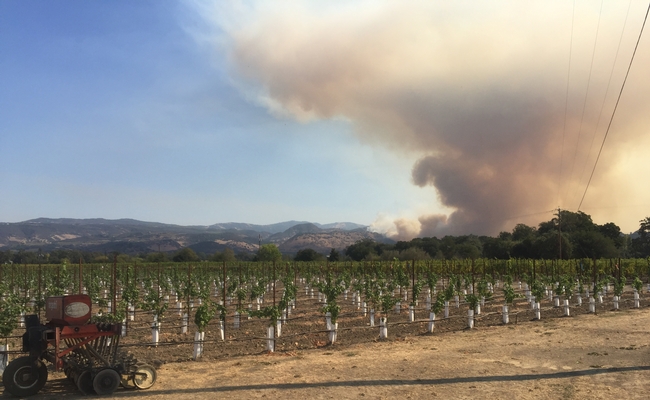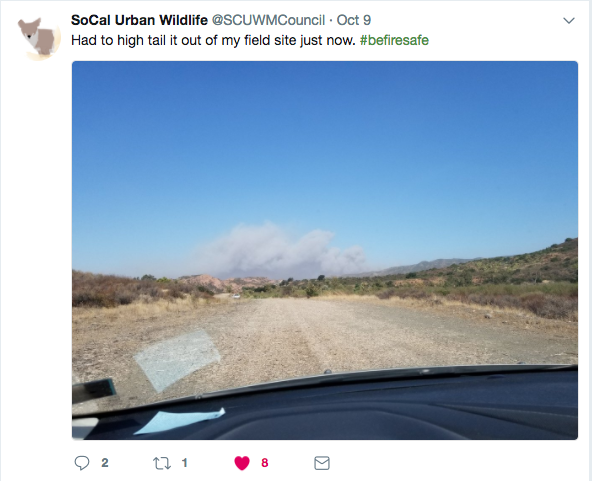- Author: Pamela Kan-Rice
California will be dealing with the effects of the October 2017 wildfires for years to come. The Northern California wildfires that ignited Oct. 8 grew into urban conflagrations and burned for days, killing 43 people and destroying at least 8,400 structures.
In Southern California, Niamh Quinn, UC Cooperative Extension human-wildlife advisor, tweeted a photo after outrunning the Canyon Fire 2, which burned over 9,000 acres and destroyed 25 structures.
Brian Oatman, director of Risk & Safety Services, contacted UC Cooperative Extension employees in Sonoma, Napa, Marin, Mendocino, Lake, Butte, Sutter, Yuba and Orange counties and at the Hopland, Sierra Foothill and South Coast research and extension centers.
On Oct. 10, Oatman sent an email to the ANR community giving a status report on the UC ANR offices in the fire zones, saying, “We have heard that all employees are safe.” He added, “In many counties, staff know of 4-H or Master Gardener families who have lost homes or suffered damage.”
In Solano County, 17 UC Master Gardener volunteers, maybe more, lost their homes in the fires. The UC Master Gardener Program quickly set up an online form to connect Master Gardener volunteers throughout the state who wanted to offer lodging, supplies and words of support to fellow volunteers impacted by the fires.
In Sonoma County, UC Cooperative Extension staff and 4-H members helped rescue livestock.
ANR suffered no significant property damage, but some offices closed due to local evacuation orders.
Kaan Kurtural, UC Cooperative Extension viticulture specialist based in Oakville, said the viticulture research station went without electricity for 16 days. They brought in generators from UC Davis.
To help evacuated Californians who returned to their homes recover from fires, Strategic Communications created a story map with links to UCCE county resources.
News reporters sought out several UC ANR experts to explain why the wildfires spread so quickly and burned so intensely and how the fires would affect agriculture. See the ANR News blog for the monthly news roundup for October.
If you would like volunteer or donate to fire recovery efforts, check with local food banks or organizations such as Sonoma County Recovers to find out what is needed. If you would like to contribute to UC Master Gardener volunteers who are in need, you can fill out a survey that was created to connect resources with the affected volunteers: ucanr.edu/mgrelief.




